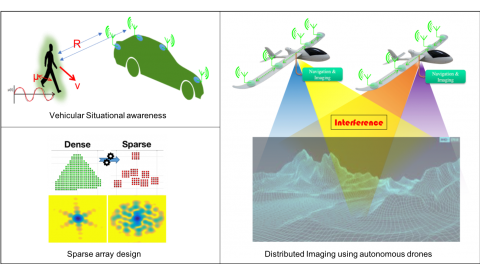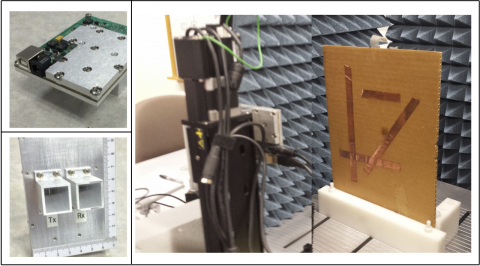The focus of this project is to develop theory and algorithms for a mm-wave imaging system using low cost infrastructure. The higher bandwidth available with mm-wave radar can be leveraged for high resolution imaging in short to medium range applications.
Vehicular Situational Awareness systems: Using an array of multiple monostatic (collocated transmit and receive antennas) radars, our goal is to achieve fine doppler and cross range resolution for situational awareness.
Sparse Array Design: Radar sensors with highly directive beams can be realized using coherent sparse arrays of subarrays that emulate the properties of large baseline array at low cost while controlling grating lobes arising from sparsity.
Coordinated radar imaging using drones: A network of drones equiped with multiple sensors perform distributed imaging by sharing information for navigation, collision avoidance etc.
Real-time mm-wave imaging system for applications such as gesture recognition (e.g., implemented on handhelds, laptops or televisions) and other commercial, medical, and security screening applications.


